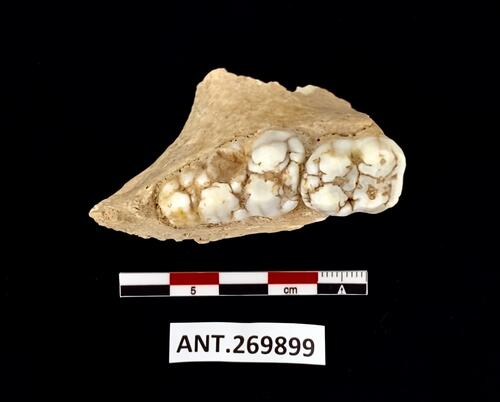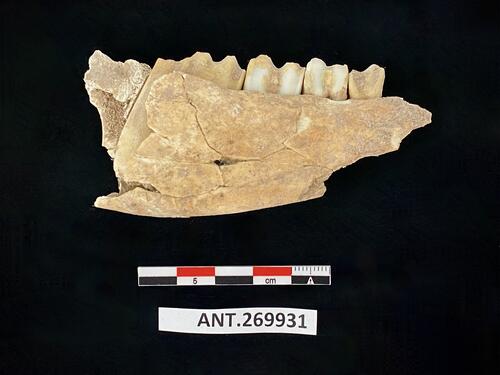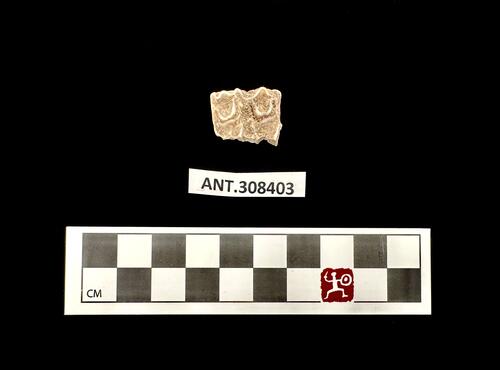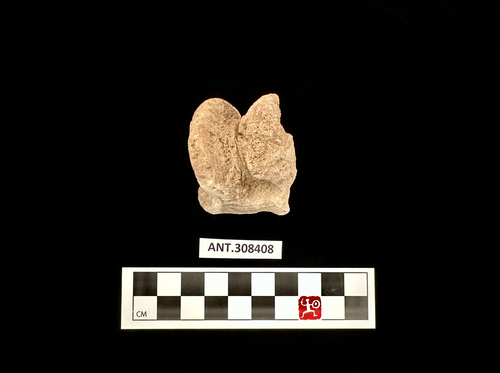Tell Leilan Zooarchaeological Project
The Tell Leilan Zooarchaeological Project (established in 2018 by Christina M. Carolus and Asa S. Cameron) is an interdisciplinary collaboration centering on the analysis of faunal skeletal remains recovered from the site of Tell Leilan. It investigates long term human-animal relations at the site through the generation of integrated datasets that combine primary zooarchaeological data collection (e.g. NISP, biometry, age and sex estimation, basic taphonomy) with a range of complementary bioarchaeological and biomolecular analyses. Areas of research interest include local animal economies and management regimes, paleoclimate and paleoecology, mobility, animal diet, domestication processes, and paleogenetics.
Currently housed in the Yale Peabody Museum of Natural History, this extensive skeletal collection contains several thousand faunal specimens spanning the late Ubaid Period (c. 5th millennium BC) through the late 2nd millennium BC. Tell Leilan’s faunal record presents an exceptional case study of the long term development of human-animal relationships in northern Mesopotamia. Upon completion, data generated from the project will be made openly accessible.
Primary Zooarchaeological Analysis
The principal research objective of the project is to provide complete primary zooarchaeological documentation of the Tell Leilan faunal collection. These data include taxonomic and elemental identification, quantification (NISP and MNI), biometry, age and sex, pathology, basic taphonomy, and posthumous bone modification from human activity (e.g. carving, butchery, burning).





Ancient DNA Research
The Tell Leilan faunal record indicates early exploitation and management of a number of mammals. This includes the early (c. 3rd millennium BC) presence of domesticated equine species such as horses and donkeys (E. caballus and E. asinus, respectively), domesticated pigs (Sus scrofa), domesticated cattle (Bos spp.), goats (Capra hircus) and sheep (Ovis aries). It also includes the occasional presence of wild foraging mammals such as onagers (E. hemionus) and gazelle (Gazella spp.). The comparatively early and long term presence of various domesticated fauna in the Tell Leilan collection suggest its promise as a paleogenetic resource to address longstanding domestication-related and biogeographic research questions.
Early Equine Project
This project focuses on the aDNA identification of early equine remains within the collection. A subset of equine dentition recovered throughout the site has been preliminarily identified to species ((E. caballus, E. asinus, and E. hemionus) and remains under analysis in partnership with Dr. Ludovic Orlando and the Orlando Group at the Centre for GeoGenetics at the University of Copenhagen, and CNRS CGAT laboratory, University of Toulouse, France.
Plans to expand the scope of paleogenetic research to include other domesticated fauna are under consideration.
Stable Isotope Analysis
Stable isotope analysis constitutes one of the most active research domains within the Tell Leilan Faunal Project. This dimension of research investigates diachronic changes in domesticated animal diet and mobility in the pre-, per-, and post-Akkadian periods (2350-1900 BCE). Exploration of how (or whether) changes in patterns of livestock movement and feeding may provide insight into local human responses to the 4.2 ka BP megadrought provides one guiding line of inquiry.
Two complementary stable isotope studies are currently active. The first study (est. 2020) investigates the dietary and mobility patterns of domesticated pigs recovered from the Lower Town South portion of Tell Leilan. The second study (est. 2021) examines these patterns in domesticated sheep and goats recovered from the same sector. This ongoing collaborative work is the subject of two Yale undergraduate senior theses (Jacob Kalodner ‘21 and Sophia deSchiffart ‘23). Next steps in the broader research plan include analyses of fauna derived from other portions of the site (e.g. the Acropolis) and expansion of the range of species under analysis (e.g. purely obligate drinkers such as Bos spp., as well as wild foragers such as Gazella spp.).
Dental Calculus Research
Dental calculus (calcified dental plaque) is a biological matrix that has emerged as a fundamental source of information in archaeology and other disciplines concerned with investigating the past. It contains a multitude of diverse microparticulate matter and biomolecules, providing information about an individual’s culture, diet, ancestry, and health. Importantly, it can also provide granular and direct dietary evidence to complement the indirect dietary signals reflected in stable isotopic data.
Most dental calculus research focuses on human remains. However, it is an equally valuable source of insight into ancient faunal life histories. Building on a pioneering study by Price and Weber (2016), this dimension of research will analyze microparticulate remains in dental calculus collected from all faunal specimens undergoing stable isotope analysis. The current dataset includes nearly 150 individuals.

